Abstract
A novel bioreactor system constructed for studies of the interactions of heavy metals and microbial cells at the solid-solution interface is described. The applicability of this experimental system to meet the severe constraints imposed on such an apparatus by the requirements for an unambiguous interpretation of data and for mathematical modeling of these interactions was explored with the trace metal lead and with the marine bacterium Pseudomonas atlantica. A chemically defined medium composed of the major components of seawater, simple salts required for growth, glucose, and the single amino acid glycine was derived. It supported a maximum growth rate several times less than that in a complex medium, but provided growth to high cell densities and the formation of biopolymer and supported the development of a monolayer biofilm. The use of such a medium in conjunction with our bioreactor system minimized trace metal contamination while allowing quantification of the partitioning of lead onto various reactor surfaces. Lead adsorption by reactor walls and model surfaces was linear with equilibrium led concentration up to 6 X 10(-6) mol/liter. Equilibrium lead adsorption due to P. atlantica biofilm surfaces ranged from 20 to 40% at a total lead concentration of 10(-6) mol/liter depending upon solution pH and ionic composition, indicating that biofilms can play an important role in controlling toxic metal concentrations in natural systems.
Full text
PDF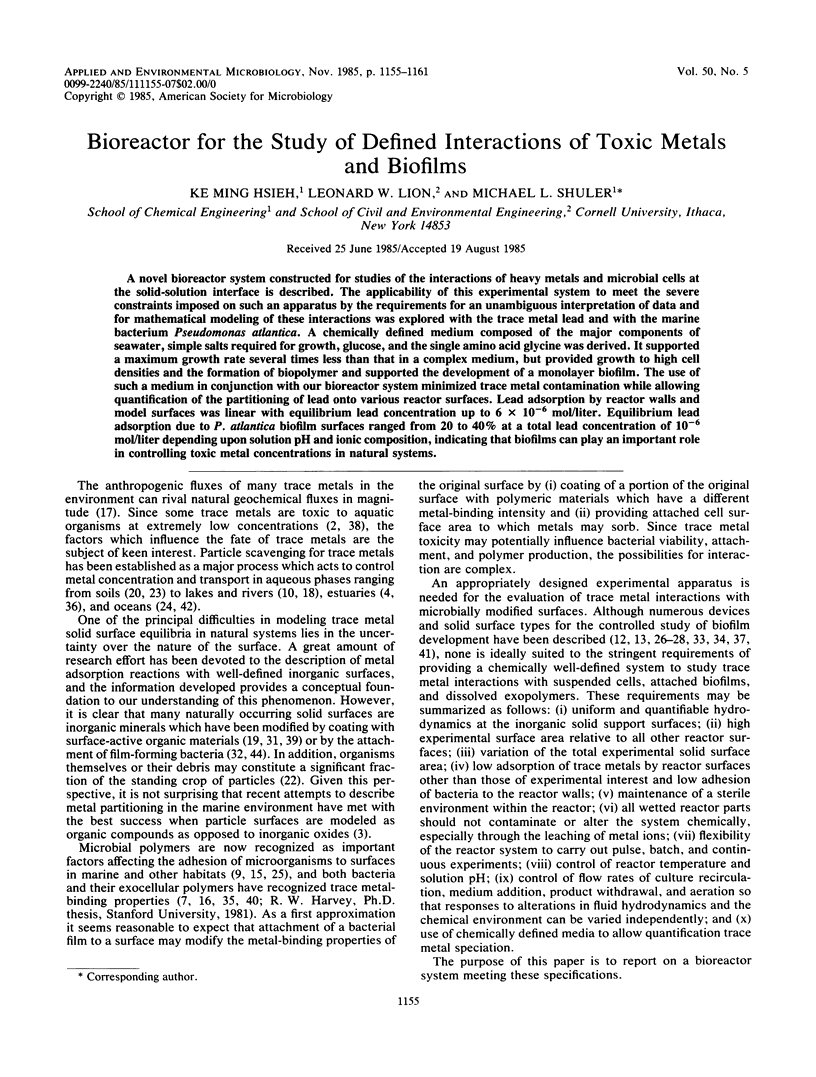
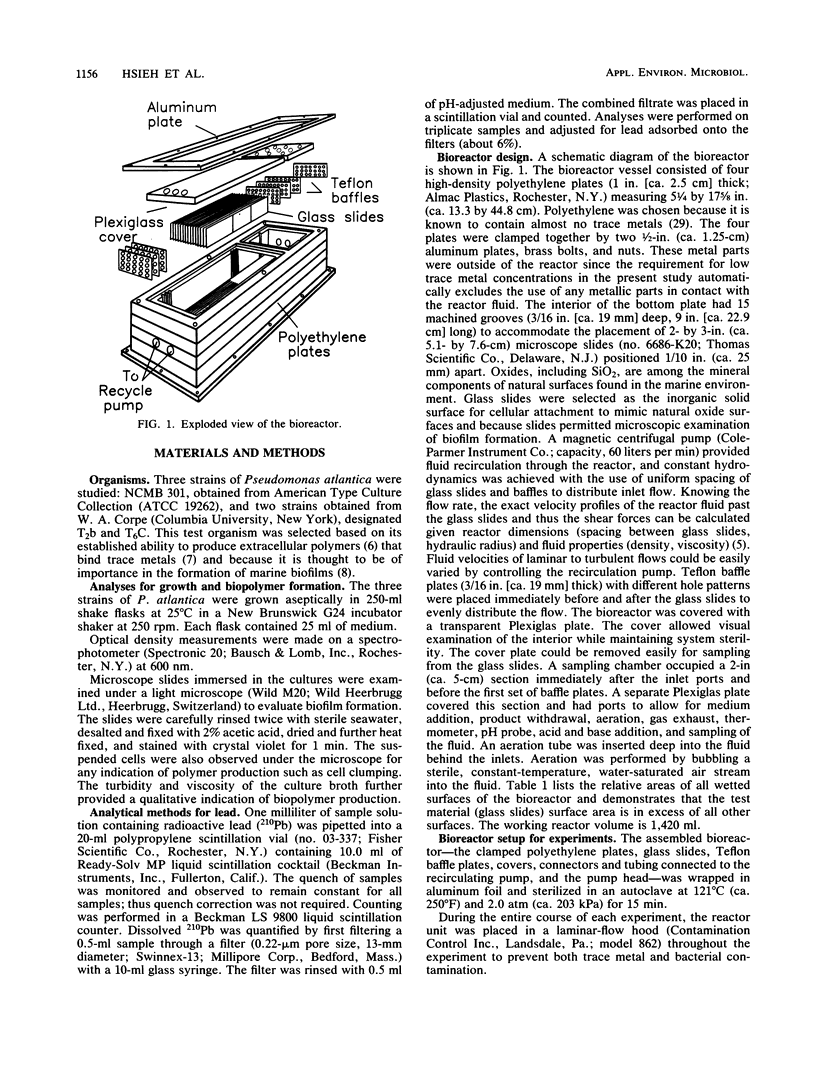
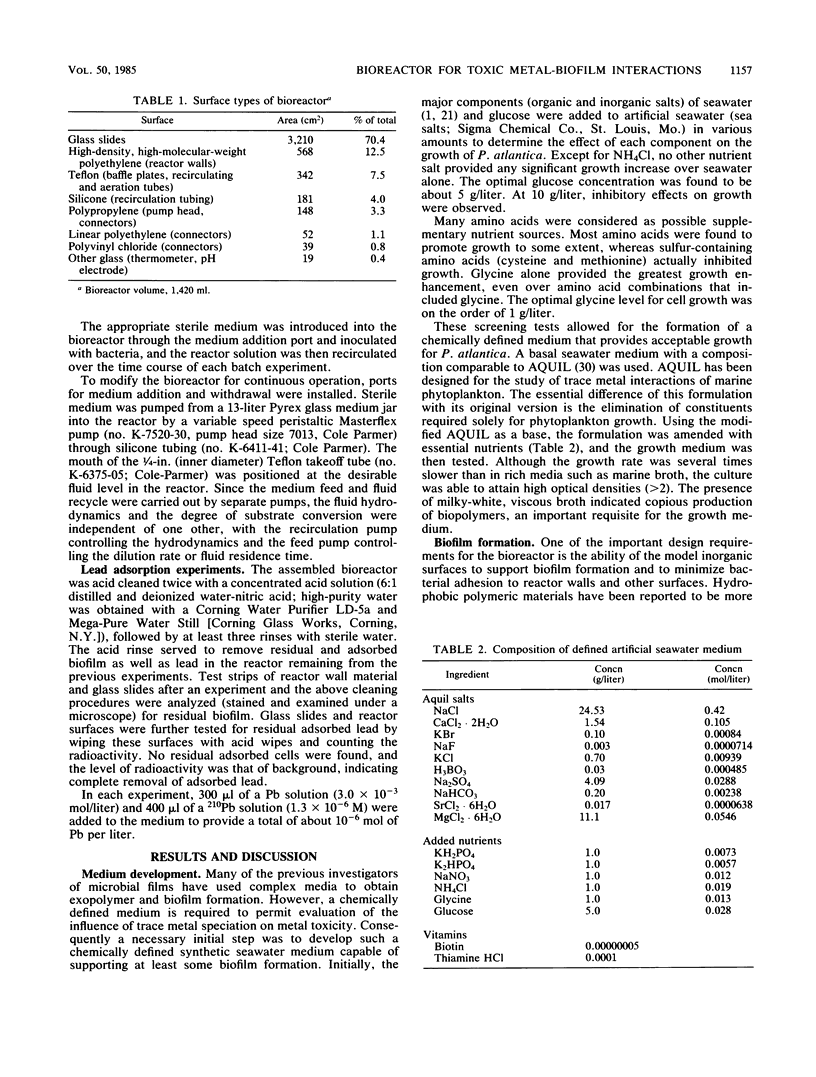
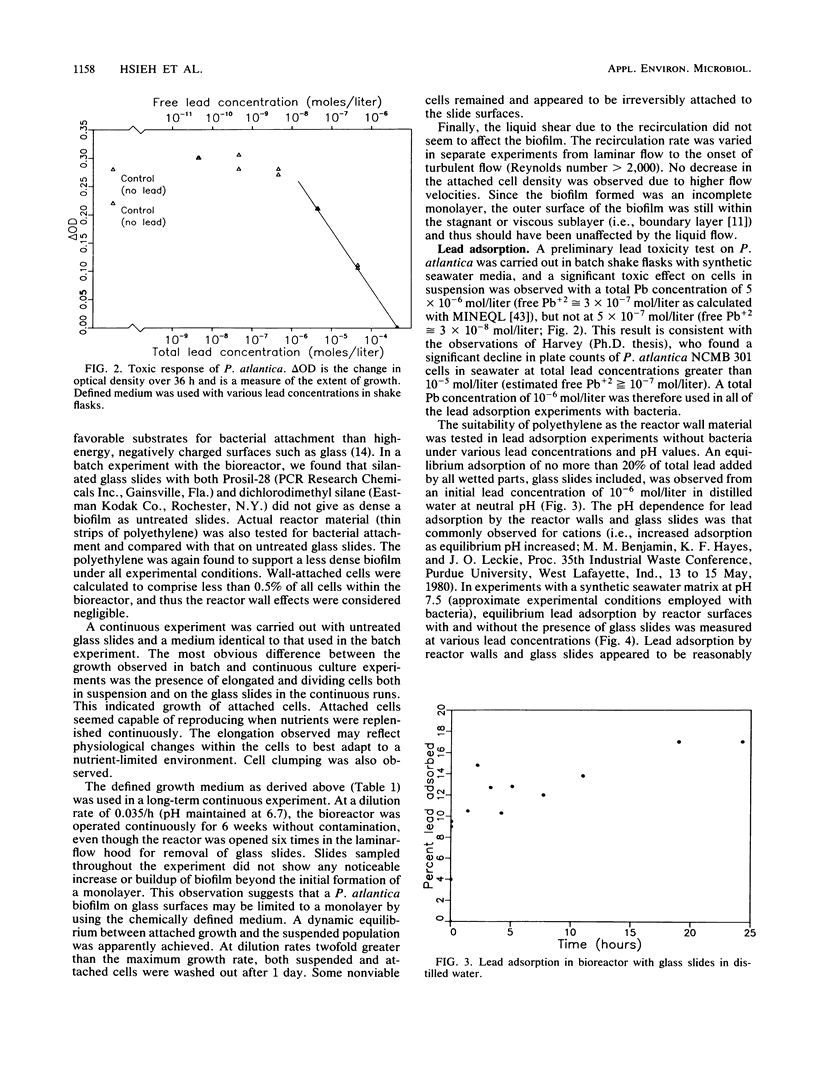
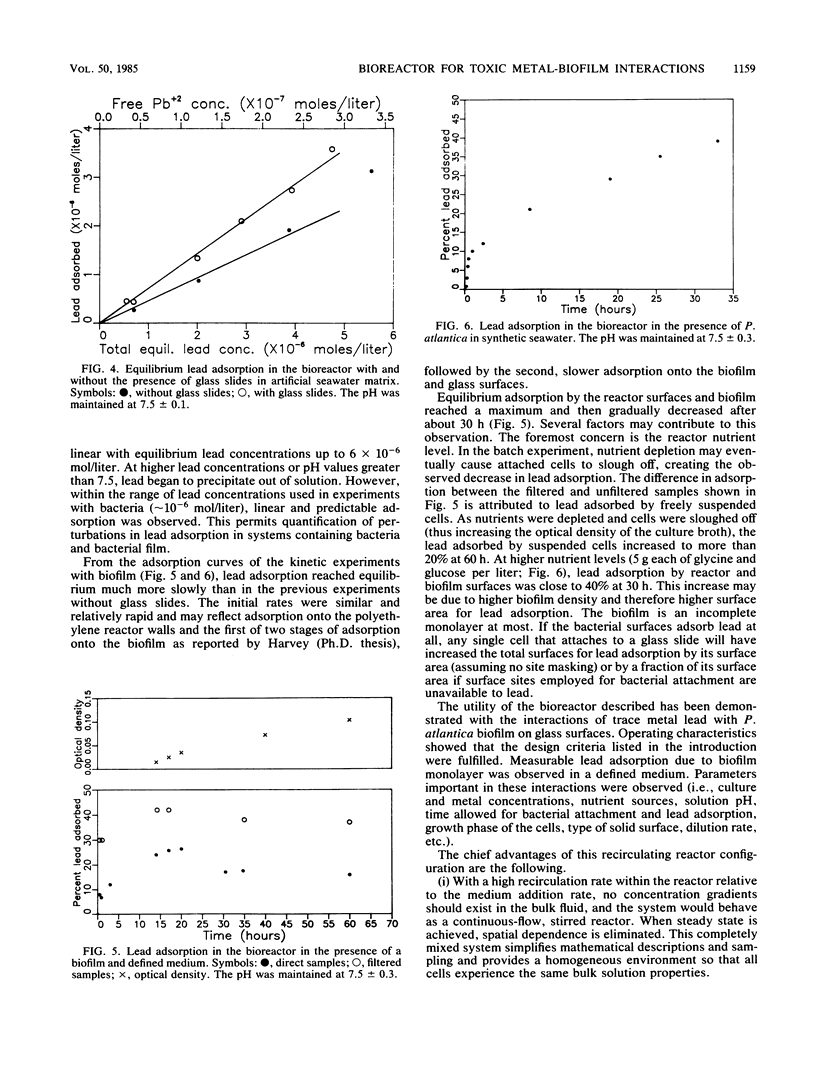
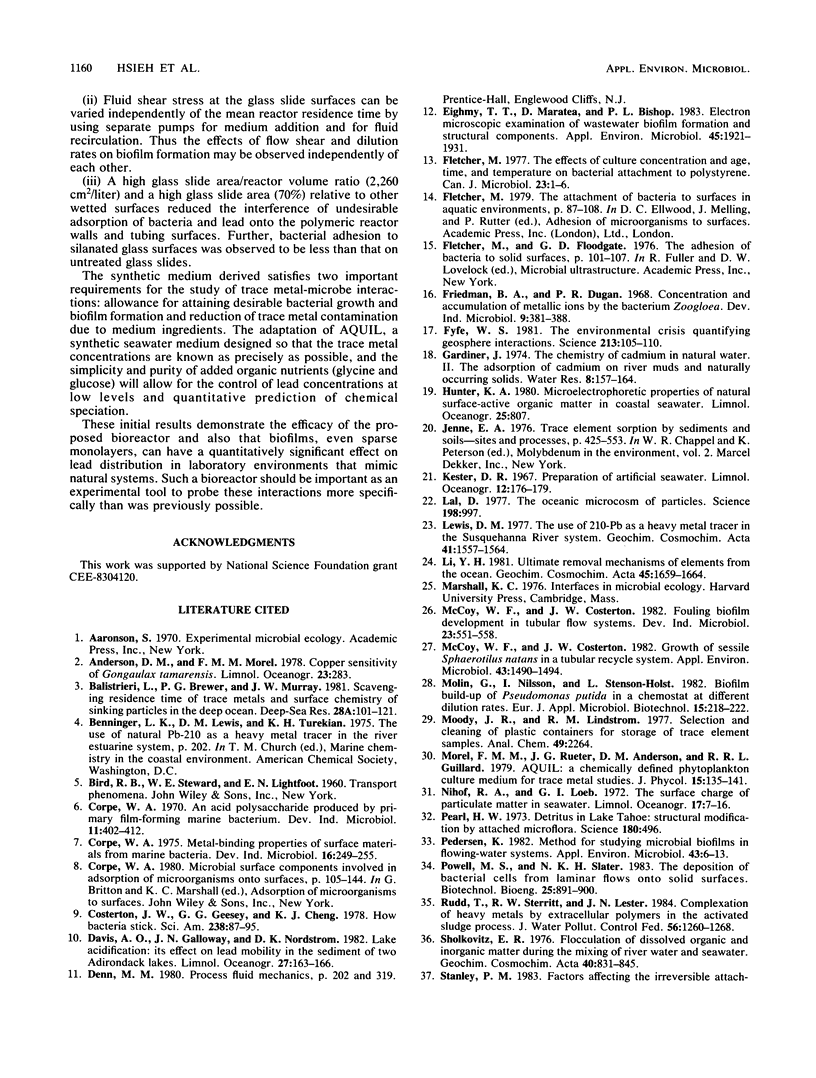
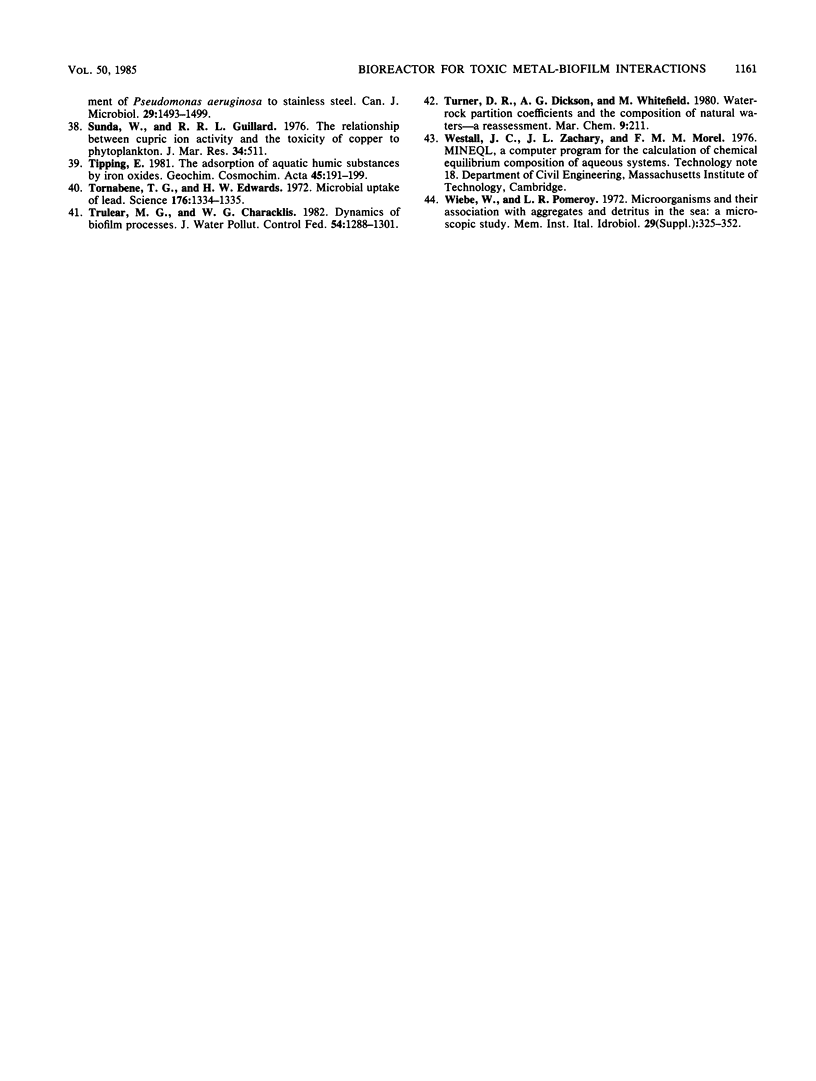
Selected References
These references are in PubMed. This may not be the complete list of references from this article.
- Costerton J. W., Geesey G. G., Cheng K. J. How bacteria stick. Sci Am. 1978 Jan;238(1):86–95. doi: 10.1038/scientificamerican0178-86. [DOI] [PubMed] [Google Scholar]
- Eighmy T. T., Maratea D., Bishop P. L. Electron microscopic examination of wastewater biofilm formation and structural components. Appl Environ Microbiol. 1983 Jun;45(6):1921–1931. doi: 10.1128/aem.45.6.1921-1931.1983. [DOI] [PMC free article] [PubMed] [Google Scholar]
- Fyfe W. S. The environmental crisis: quantifying geosphere interactions. Science. 1981 Jul 3;213(4503):105–110. doi: 10.1126/science.213.4503.105. [DOI] [PubMed] [Google Scholar]
- Lal D. The oceanic microcosm of particles. Science. 1977 Dec 9;198(4321):997–1009. doi: 10.1126/science.198.4321.997. [DOI] [PubMed] [Google Scholar]
- McCoy W. F., Costerton J. W. Growth of Sessile Sphaerotilus natans in a Tubular Recycle System. Appl Environ Microbiol. 1982 Jun;43(6):1490–1494. doi: 10.1128/aem.43.6.1490-1494.1982. [DOI] [PMC free article] [PubMed] [Google Scholar]
- Paerl H. W. Detritus in lake tahoe: structural modification by attached microflora. Science. 1973 May 4;180(4085):496–498. doi: 10.1126/science.180.4085.496. [DOI] [PubMed] [Google Scholar]
- Pedersen K. Method for studying microbial biofilms in flowing-water systems. Appl Environ Microbiol. 1982 Jan;43(1):6–13. doi: 10.1128/aem.43.1.6-13.1982. [DOI] [PMC free article] [PubMed] [Google Scholar]
- Stanley P. M. Factors affecting the irreversible attachment of Pseudomonas aeruginosa to stainless steel. Can J Microbiol. 1983 Nov;29(11):1493–1499. doi: 10.1139/m83-230. [DOI] [PubMed] [Google Scholar]
- Tornabene T. G., Edwards H. W. Microbial uptake of lead. Science. 1972 Jun 23;176(4041):1334–1335. doi: 10.1126/science.176.4041.1334. [DOI] [PubMed] [Google Scholar]


